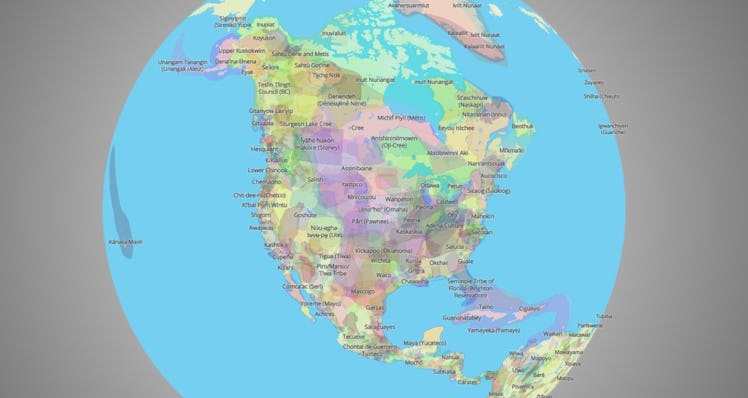This Map Shows What Indigenous Land You’re On Right Now
Talking with our kids about the history of the lands we live on and the people who lived here first is a meaningful, ongoing family conversation.

Today marks Indigenous Peoples' Day, a day to recognize, celebrate, and reflect on the role and impact Indigenous people have had on the country. There's a very long and dark history in the U.S. regarding Indigenous rights, and as we continue to have conversations with our kids about natural history, learning about which Indigenous lands you're living on is a good first start. And there's a map to help you with that.
A Land Acknowledgement is a formal statement that gives thanks and gratitude to the Indigenous Peoples who worked and lived on the land both presently and historically. These statements honor Indigenous culture, their ancestral homelands, and the sacredness of land while recognizing the complex, ongoing history of colonialism and the privilege we have to live where we do.
Talking with our kids about the history of the lands we live on and the people who lived here first is a meaningful, ongoing family conversation. But first, you need to know the history of the land where you live, go to school, and are right now. Native Land Digital has an easy-to-use map to get you started.
Native Land Digital is an Indigenous-led non-profit in Canada working to "create and foster conversations about the history of colonialism, Indigenous ways of knowing, and settler-Indigenous relations, through educational resources such as our map and Territory Acknowledgement Guide."
To use the map, click on any of the labels in the U.S. or any other part of the world, or you can type in a zip code, city, or state in the search box to narrow down your reading.
From there, you can click on any of the names that pop up to learn more about the Indigenous people who lived in the area. The map also has a toggle to learn the language used in any area or any Treaties that were in place or currently are.
"We aim to improve the relationship of people, Indigenous and non-Indigenous, with the land around them and with the real history and sacredness of that land," Native Land Digital says. "This involves acknowledging and righting the wrongs of history, and also involves a personal journey through the importance of connecting with the earth, its creatures, and its teachings."
"We hope to inspire people to gain a better understanding of themselves, their ancestors, and the world they live in so that we can all move forward into a better future," they added.
To check out the map and learn more about the work at Native Land Digital, check out their website.